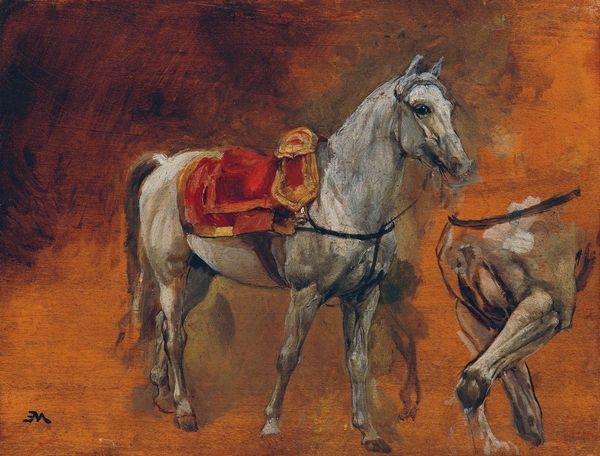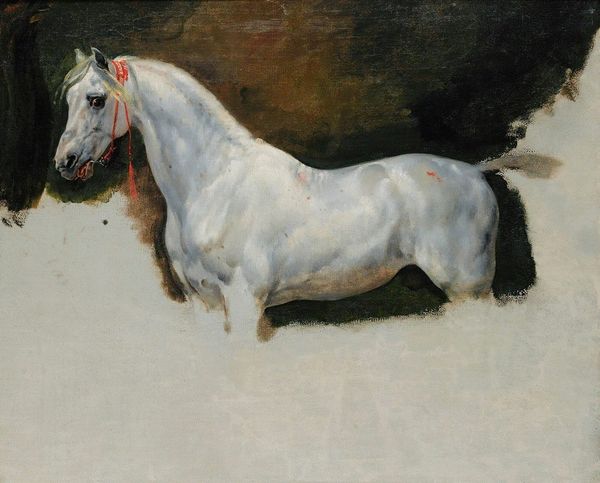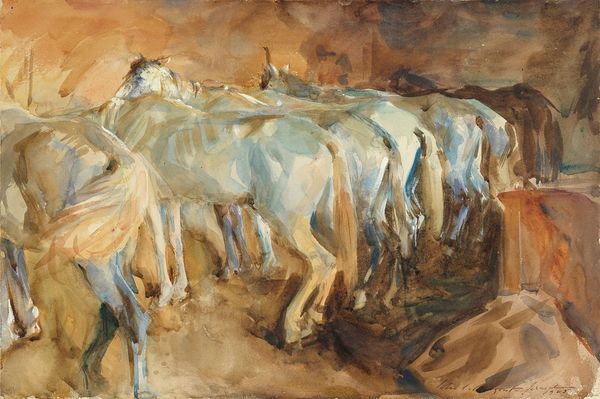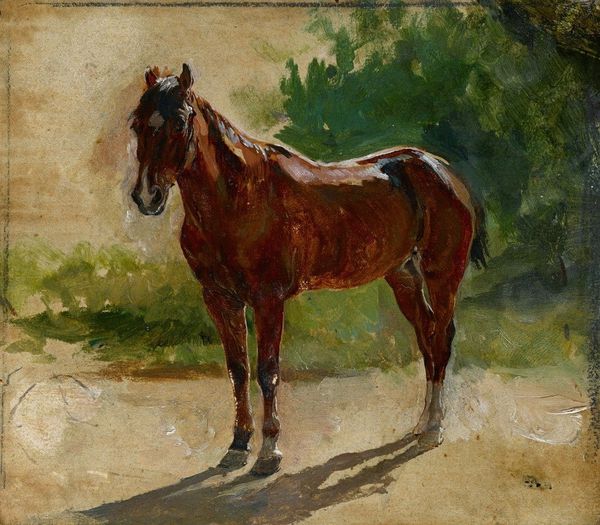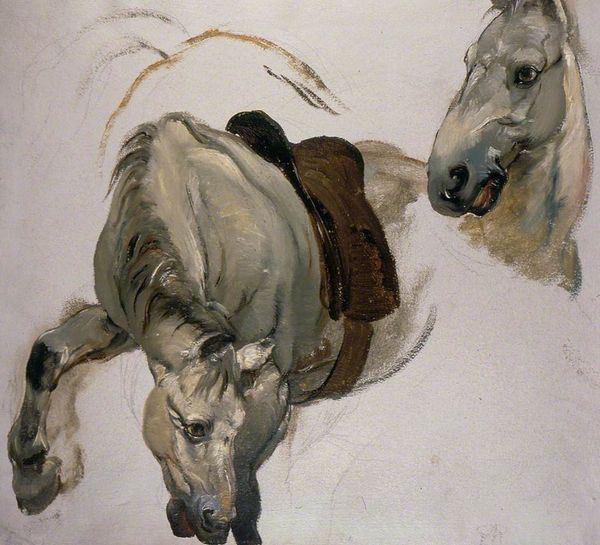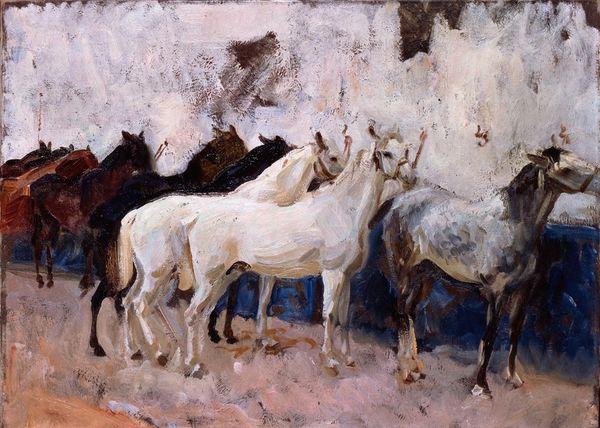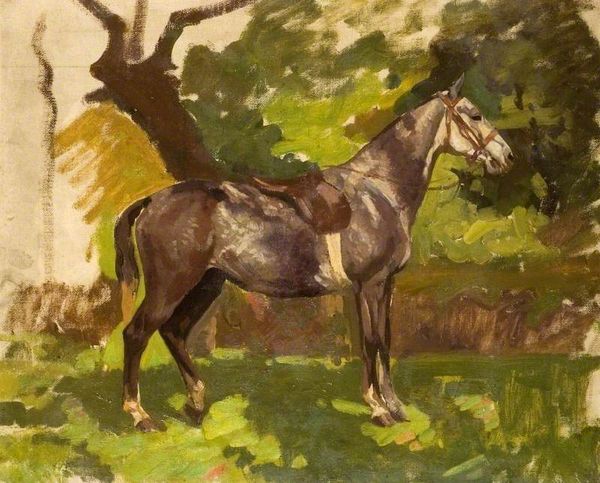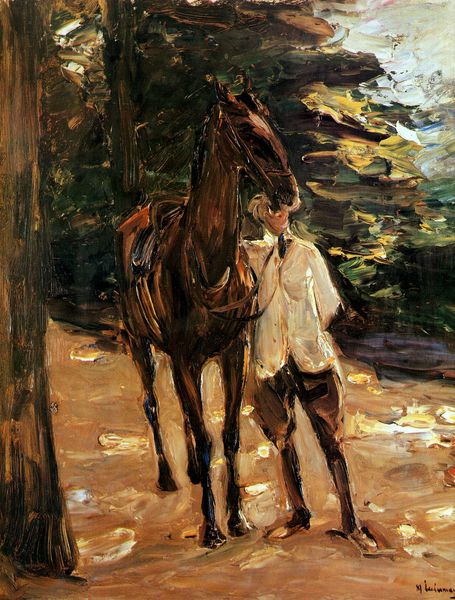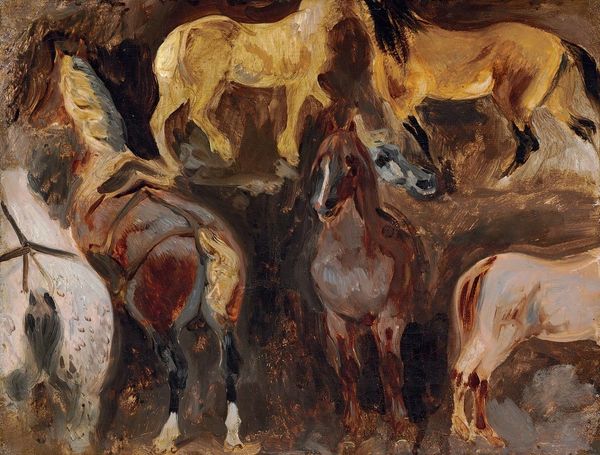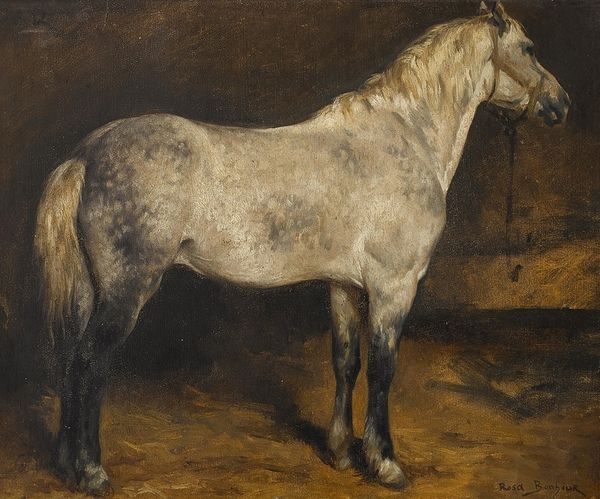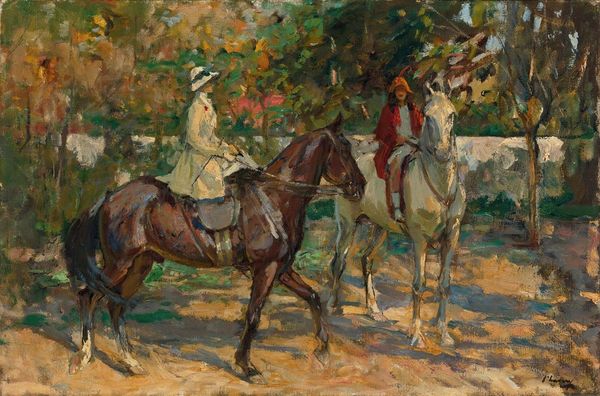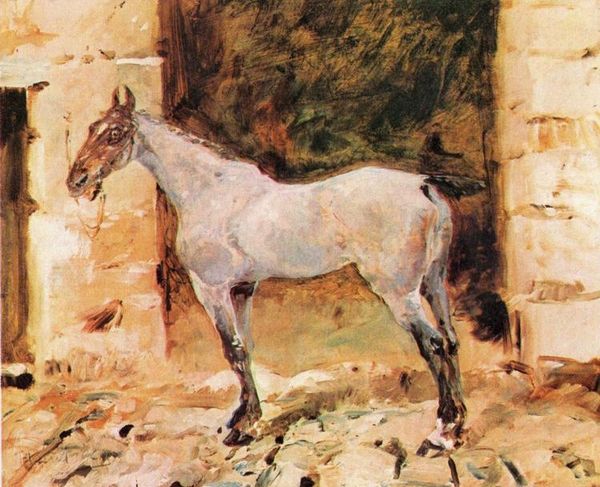
Copyright: Public domain
Curator: Here we have Karoly Ferenczy's 1898 oil painting "Study for the Three Kings". I'm immediately struck by the textured brushwork. Editor: The colour palette whispers of autumn, doesn’t it? The pervasive use of brown seems to ground the central image. It feels muted. It's hard to ignore that feeling. Curator: It is indeed a restrained composition, the brown in stark contrast to the brilliant, nearly phosphorescent white horse in its center. A single saddled horse dominates the picture plane; however, if we follow the artist’s process, we know it functioned as an artistic tool toward Ferenczy’s larger thematic ambitions. Note how the artist masterfully renders shadow and volume across the horse's form using variations of white, grey, and a mere hint of pale pink. Editor: And this use of pink does something interesting in connection with the brown surroundings, especially if we think about horses’ use during that period as status symbols; however, considering that Ferenczy worked at a time of great social change and growing class disparities, might there be some element of social commentary on class, especially considering its title connection? Curator: Perhaps, but it's essential to observe how Ferenczy organizes this piece within the formal vocabulary of Post-Impressionism: by structuring light to create visual tension. Look at how he deliberately juxtaposes this singular illuminated animal against its dense surroundings of brown. The impressionistic mark making generates rhythm throughout the painting that both energizes and unites disparate elements. Editor: The formal dynamism you highlight definitely has political implications. Horses as laborers were absolutely essential for wealth extraction and its redistribution during the late nineteenth century, whether through agriculture or transit; yet here we find an individual one being presented—isolated, almost—without any evident directionality within nature's bounty. Could the artist be urging audiences toward further introspection concerning societal values, beyond class too? Curator: I see your point. Nonetheless, irrespective of external allegories, there's artistic merit, right? This aesthetic approach enables it stand apart, due in part to bold brushstrokes creating distinct yet merged shapes evoking both presence with absence. The eye constantly flows from here, back out there: motion which animates the composition. Editor: Agreed. While dissecting through ideological viewpoints, it has tremendous intrinsic aesthetic and historic resonance for continued discussions about representation amidst periods when society underwent seismic shifts…it certainly makes us evaluate things much closer concerning equine representation amidst times filled political instability...and overall socio-economic disruption through societal transformations! Curator: Indeed, so let us hope its complex yet powerful arrangement spurs each visitor think about painting, representation within, historical context during his or her walk via contemporary lenses onward during reflection outside later eventually...
Comments
No comments
Be the first to comment and join the conversation on the ultimate creative platform.
